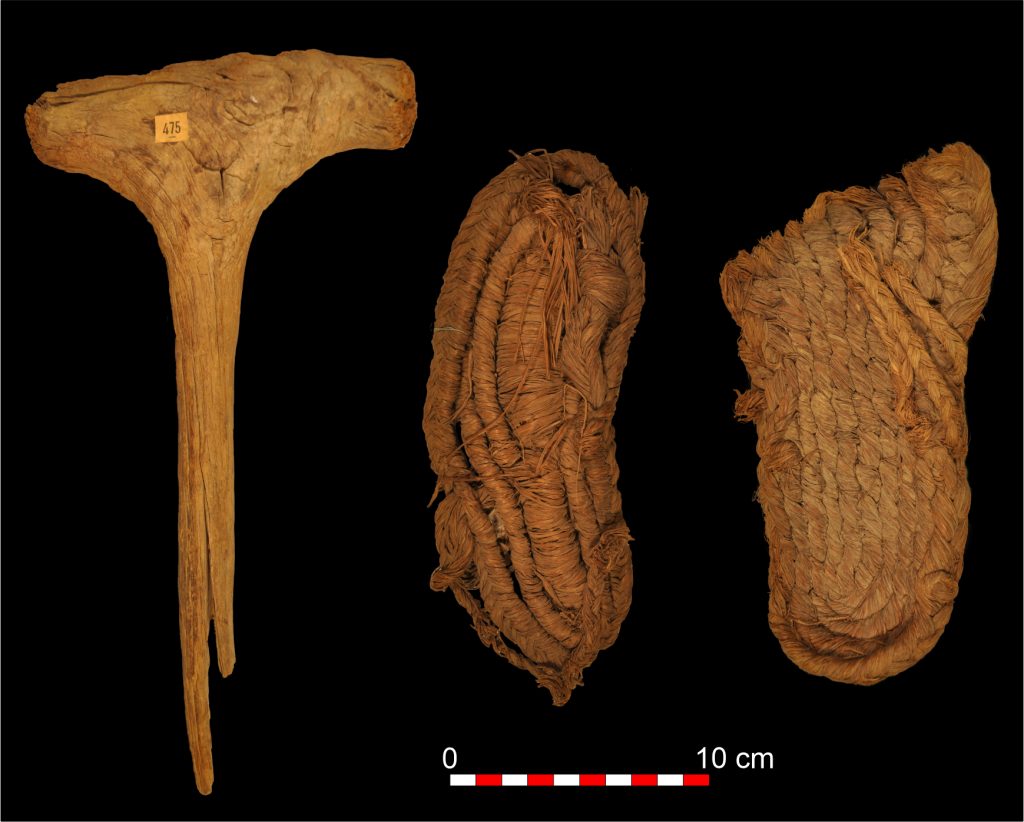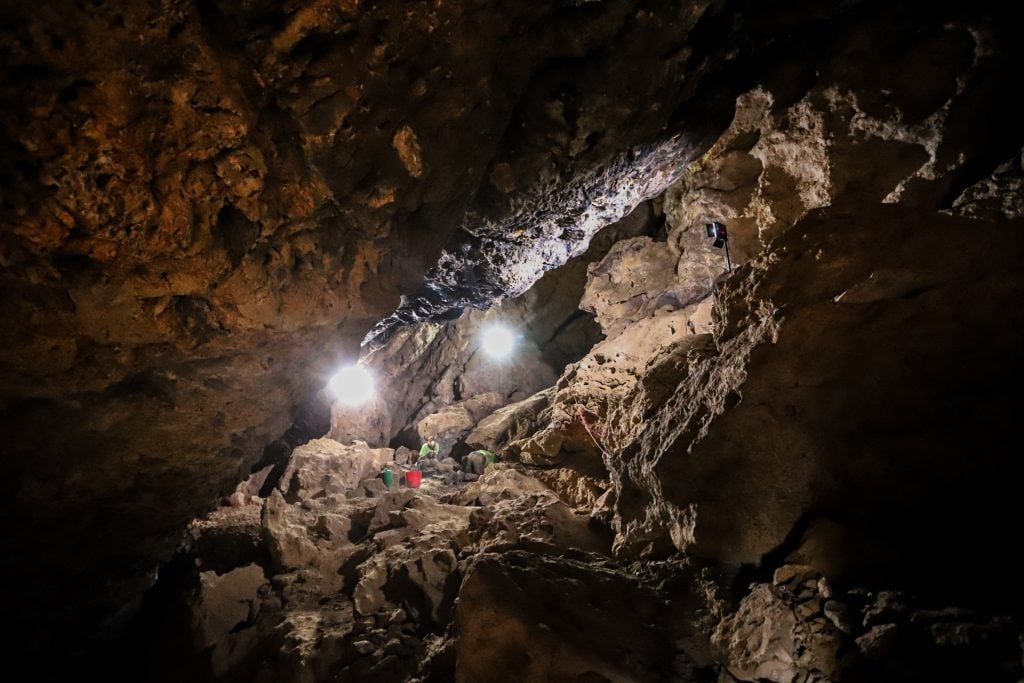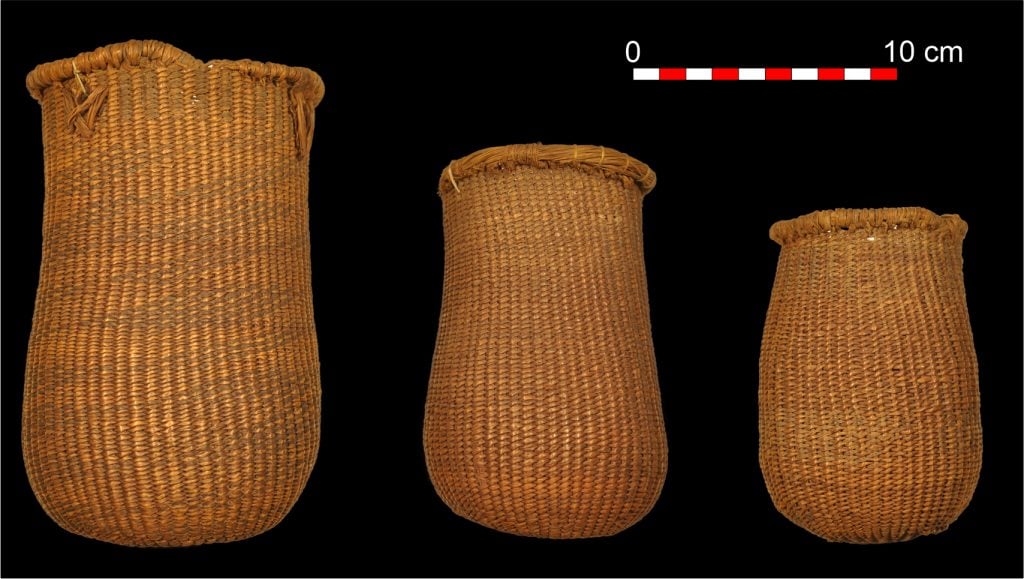Archaeology & History
A Pair of 9,500-Year-Old Sandals Discovered in a Spanish Bat Cave Are Europe’s Oldest Shoes
The footwear dates back to the Holocene period.

The footwear dates back to the Holocene period.

Richard Whiddington

Scientists have found what is believed to be Europe’s oldest pair of shoes in a cave network in southern Spain.
Known as the Cueva de los Murciélagos—the cave of the bats—the site was first uncovered in 1857 by miners who stumbled upon a group of mummified corpses. Ten years later, the archeologist Manuel de Góngora determined it was a hunter-gatherer burial site based on the wood and grass artifacts he found.
Now archaeologists have used the latest radiocarbon dating technology to show that the cave’s items are the oldest evidence of sophisticated basketry ever found in southern Europe. This includes the oldest shoes found in Europe.
In findings published in Science Advances journal on September 27, researchers from Spain’s University of Alcalá dated the assemblage of 76 artifacts, including baskets and 22 sandals, at between 6,200 and 9,500 years old, a span ranging from the Early to the Middle Holocene. Previously, it was assumed the organic materials were Neolithic, which means that the recent findings show they are 2,000 years older than originally thought.

Interior of the Cueva de los Murciélagos de Albuñol. Photo: Courtesy of Blas Ramos Rodríguez.
Moreover, the quality and technical complexity of the basketry is challenging archaeological assumptions about the simplicity of life in pre-agricultural human communities.
“The new dating of the baskets from the Cueva de los Murciélagos opens a window of opportunity to understand the last hunter-gatherer societies of the early Holocene,” the study’s lead author Francisco Martínez-Sevilla said via email.
The baskets and sandals were woven out of esparto, a type of grass native to the Iberian Peninsula. The ancient humans made twine by crushing the esparto, then dried it for up to 30 days before soaking it for 24 hours so that the grass was pliable. A traditional technique, the article notes, that endures to this day.

9,500-year-old Mesolithic baskets from the Cueva de los Murciélagos (Albuñol). Photo: Courtesy of the MUTERMUR project.
The shoes have a single braid that wrapped around the wearer’s ankle and are similar in style and material to those of Ötzi the Iceman, found on the Italian-Austrian border in 1991. Using the descriptions previously provided by Góngora, the study hypothesizes that the bodies found in the cave were buried wearing the sandals. Some sandals have signs of wear while others appear never to have been worn, suggesting that some people had clothing made especially for their burial.
Other artifacts found onsite include ceramic fragments, blades of flint and quartz, perforated shells, an ax head, stone and shell bracelets, and a gold diadem.
The cave’s lack of humidity and dry cooling wind prevent a buildup of bacteria and are responsible for the remarkable preservation of the artifacts. “This places Cueva de los Murciélagos as a unique site in Europe to study the organic materials of prehistoric populations,” Martínez-Sevilla said.
Archaeologists hope to extend their research by studying each of the artifacts in detail, a process Martinez-Sevilla said is dependent on securing additional funding.
More Trending Stories:
Four ‘Excellently Preserved’ Ancient Roman Swords Have Been Found in the Judean Desert